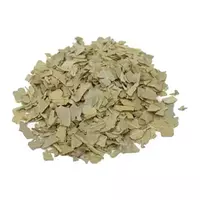Boldo

The boldo or Peumus boldus plant is the only member of the Monimius family. Often in the literature boldo is called nothing more than peumus boldo. In nature or its natural habitat, the boldo plant is found in countries such as Argentina, as well as Chile. The plant is currently cultivated in Peru as well as the Mediterranean region.
Residents of the plant growing region learned about the useful properties of boldo centuries ago. Up to our time, boldo is considered an effective means of traditional medicine. In addition, official medicine took note of the useful properties of the plant. In its appearance and biological structure, the boldo is an eternally green tree that rarely exceeds seven meters in height.
It is not uncommon for boldo to grow as a shrub. It is worth noting that all components of the plant stand out for their pronounced spicy aroma. Due to its strong aroma, boldo leaves are used in cooking as a seasoning. Ripe boldo fruits, which are yellow edible berries, are also eaten.
As a rule, boldo berries are eaten fresh, since the fruits of the plant are not subject to long storage or transportation. Boldo leaves are most often used as a substitute for such a well-known spice as bay leaf. Based on the leaves of the plant, medicinal herbal teas are made, and in addition, collections.
The chemical composition of the leaves of the plant contains a fairly large amount of such a biologically active compound as boldin. This alkaloid has a number of characteristics that make it possible to find widespread use for the boldo plant in medicine. As a rule, extracts obtained from boldo leaves have anti-cough activity, therefore, they are included in the composition of drugs.
Boldo leaves have unique aromatic properties that have been used for culinary purposes by the peoples of South America since ancient times. A strong woody aroma with hints of camphor will perfectly emphasize the taste of culinary products or diversify the tea drink. Boldo leaves are ideal for cooking meat and also fish dishes.
In addition, boldo leaf seasoning is used in the process of preparing vegetable marinades, as well as mushroom dishes. Often, boldo leaves are added to gravy, as well as a variety of savory sauces. It is worth noting that due to the content of a much larger amount of alkaloids in the chemical composition of the plant, a much smaller amount of seasoning from boldo leaves is required, in comparison with laurel leaf.
Boldo leaves are quite exotic seasoning for the inhabitants of our latitudes. However, culinary professionals claim that anyone who has ever tried to use boldo leaves when preparing food will forever leave the spice in their arsenal.
boldo 313 kCal
Energy value of boldo (Ratio of proteins, fats, carbohydrates - ju):
Proteins: 7.61 g (~ 30 kCal)
Fats: 8.36 g (~ 75 kCal)
Carbohydrates: 48.67 g (~ 195 kCal)
Energy ratio (bj | y): 10% | 24% | 62%
 Español
Español Français
Français Português
Português Русский
Русский 简体中文
简体中文 繁體中文
繁體中文 日本語
日本語 한국어
한국어 العربية
العربية Türkçe
Türkçe Қазақ
Қазақ Deutsch
Deutsch Italiano
Italiano Українська
Українська
